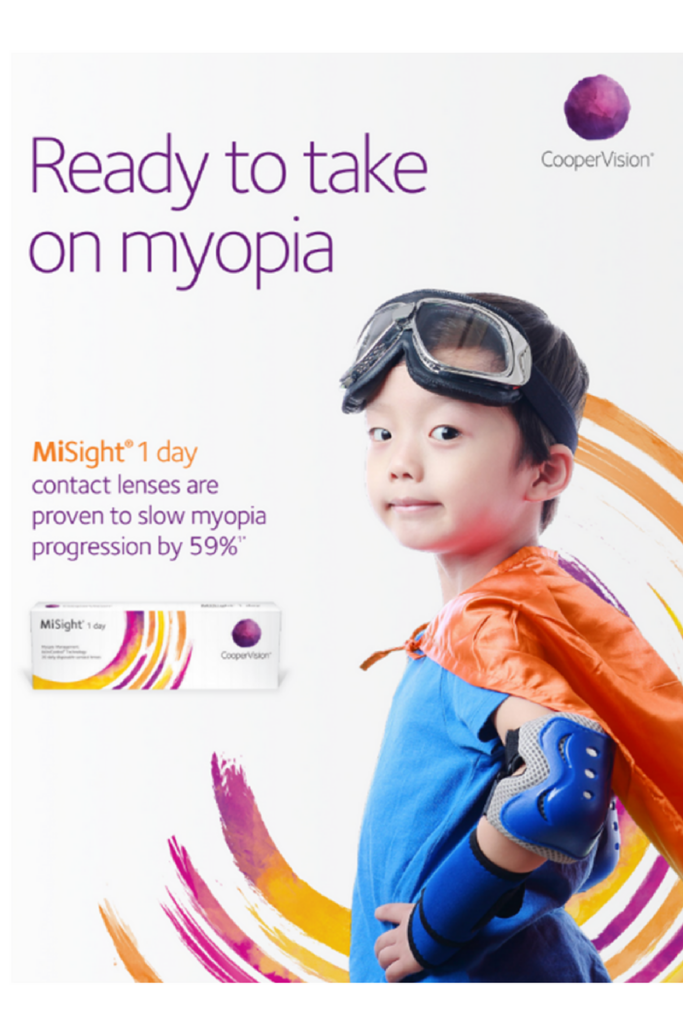Myopia Control
The prevalence of Myopia, otherwise known as short-sightedness, has increased at an astronomical rate in recent years and is now being classified as a pandemic.
Influencing factors include
- Genetics
- Asian ethnicity
- Increased near work, especially increased near screen-based device use
- Reduced outdoor time.
The problem with Myopia, aside from blurry distance vision, is that it is a progressive condition. With each increasing level of short-sightedness comes a higher risk of eye disease such as Cataracts, Glaucoma, Retinal Detachment, and Myopic Macular Degeneration later in life. Not to mention the lifelong cost associated with these higher optical prescriptions or contact lenses.
Progression rates are particularly fast in children, and glasses alone are often not the answer. Myopia control involves assessing a patient’s risk factors, initial prescription, the length of the eye, the visual demand of their lifestyle, and coordination of the two eyes known as binocular vision. This information is then used to provide treatment options to help slow down the progression of Myopia.
Treatment Options:
- Progressive or bifocal spectacles
- Soft contact lenses designed to reduce the peripheral defocus on the retina
- Orthokeratology (hard contact lenses worn at night and removed for the day)
- Atropine Eye drops
In today’s digital society myopia control has become an essential part of Optometric Practice.
